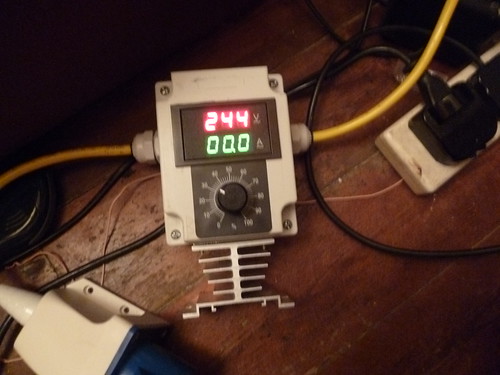Yeah, I went through the lid rather than the side for 2 reasons:-
1) No need to fit a tap in order to stop anything coming out when the pump isn't attached, where if I went through the side wall there'd be wort splashing out during the boil if I didn't fit a tap to isolate it.
2) You can separate the 2 parts of the lid whilst drilling or cutting, where to go through the side wall you have to go through the 2 layers at the same time.
Like you, I rinse the boiler out between mashing and boiling, and it helps tons. I still get a bit of gunk stuck on over the hidden elements (ever since that fateful wheat beer brew day....) but it doesn't scorch, just trub sticking on. The biggest problem I have now is that with just the 1600 watt element I just about get a rolling boil, with the 1600 watt element AND the 900 watt element I get a mental bonkers insane boil.... I'd really love to have some power control so I could use both but with a tiny bit less heat. As it is I've just been using both, with a 75 minute boil instead of a 90, and topping up more in the FV, and have found this gives me the clearest wort.
I've been lucky with the grain though, so far no noticeable compacting, and the false bottom keeps the bag of grain off the bottom. I just wish it was bigger, so I had more room at the top during the boil. Apparently, 7 inches is still very close when you're going full power... lol

We could do with somebody doing a purpose made mash tun/boiler that's about 40 litres instead of 30 eh? lol I suspect that my wife would start giving me the dead eye if I were to buy a boiler just to do the boil in.....

But heh, she's come to agree that the pump has made massive improvements and was well worth the money. :thumb1:
Once I do the planned modifications again on mine, I'll be putting the pics up. Might give you some ideas of how to go through the lid on yours, maybe even come up with an improvement on my plans. :thumb: I've been finding it much easier to tweak and improve when I have it in front of me, it's easier to visualise how to improve it.
Just a thought, could you perhaps feed the silicone pipe through some SS braid perhaps? Might help the pipe to retain integrity when under pressure maybe?






![BREWING THERMOMETER STICKERS ACCURATELY MONITOR FERMENTING BEER & WINE LIQUID TEMPERATURES 5PCS HOME BREW SPIRITS WINE LCD ADHESIVE [US]](https://m.media-amazon.com/images/I/311DDjo2X3L._SL500_.jpg)










































